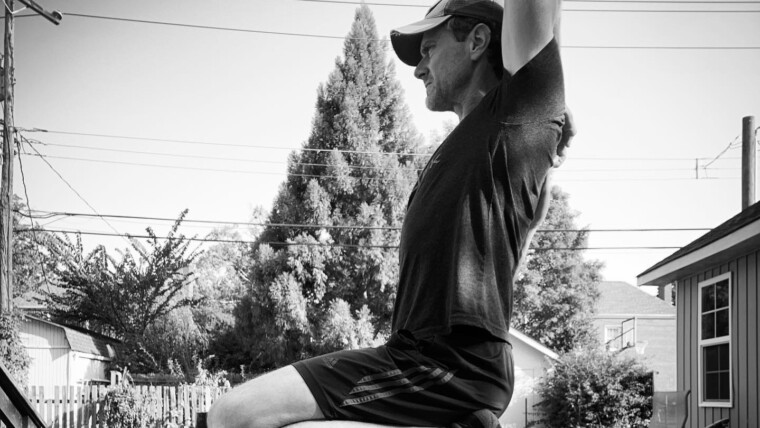As the popularity of rucking increases, many people wonder how rucking compares to running and which is “better.”
While both running and rucking contribute to one’s overall health, including burning comparable calories, weight loss, and promoting heart health, ruck training offers numerous benefits over running for people of all fitness levels.
Below we will address several areas of comparison between rucking and running. Through this analysis, we believe that rucking proves to be better than running across a number of different areas. The result is that rucking can be considered a more comprehensive and better physical activity than running.
Table of Contents
- Rucking Offers More Training Variety Than Running
- Rucking Builds Muscles That Running Doesn’t
- Rucking Is More Social Than Running
- Rucking Is Easier On Your Knees Than Running
- Rucking Is More Functional Than Running
- Rucking Requires More Gear Than Running
- Rucking Takes Longer Than Running
Rucking Offers More Training Variety Than Running
When running, there are only two variables you can change in order to introduce variety in your training. You can increase distance and/or speed. This usually manifests itself in short/fast runs or long/slower runs. However, most runners find themselves in a rut of a specific distance and pace, with very little variety.
Rucking on the other hand allows for a third variable to be introduced in your training: weight. The addition of a weighted backpack allows for a greater increase in variety of training. Rucks over short and long distances can now be done at various weights, from light to heavy, which dramatically changes speed and stimulus.

The variety of training stimulus it a distinct advantage rucking has over running.
Rucking Builds Muscles That Running Doesn’t
While running certainly offers some muscle development, a simple scan across the field of any running race will give evidence that running is not about building muscle.
Ruck marching, on the other hand, is a great exercise that builds muscle and strengthens your lower body, legs, core, shoulders, and back. While it isn’t on the level of strength training, the benefit of the added weight and the ability to “go heavy” with a weighted pack ensures that whole body muscle development occurs at a greater rate than running.
Rucking Is More Social Than Running
In order to run with others a person either needs to find someone with the same exact pace for the distance being run or one of the runners will need to run at a sub-optimal pace for his or her training goals.
When rucking, if your partner is faster or slower than you, the simple adjustment of more or less weight can quickly equalize the grouping. Someone who is an avid rucker with a 14-minute mile can join with a new rucker that can only maintain an 18-minute pace. The avid rucker can simply add extra weight to his or her ruck, increasing their load and reducing their pace correspondingly. Now, both parties can get a challenging workout while doing it together.
Rucking Is Easier On Your Knees Than Running
A study found that the force of running on the knee is eight times body weight. That means that a person weighing 150 pounds produces an impact of 1,200 pounds of force on their knee.
Conversely, the force of walking on the knee is only 2.7 times body weight. So, that same 150 pound person, even carrying a heavy backpack with 40 pounds of additional weight, only produces 513 pounds of force.
This reduction of force dramatically reduces the impact on a person’s knees over time.
Rucking Is More Functional Than Running
From an evolutionary perspective, running hasn’t been our go-to mode of transportation for the human body. It has always been walking. Not only that, but carrying heavy loads over distance has been a major part of life since our existence.
When we speak of “functionality,” both running and rucking are “functional” in developing work capacity. The question here is which one has more real-life application. The truth is that you will more frequently find yourself in need of carrying a heavy load over various distances more often than you will find yourself needing to run. Therefore, rucking serves more functional purpose in training than running.
While rucking is certainly better than running on a number of fronts, there are a few areas where running is better than rucking.
Rucking Requires More Gear Than Running
While there is seemingly no end to the gear you can acquire for both running and rucking, on a very basic level the gear demand for running is lower than rucking. All you need for running is a pair of shoes.
When it comes to rucking, you will want to get a rucking backpack and some form of heavy weights (we recommend ruck plates). While any backpack and weight will do, you’ll eventually want to invest in quality gear. Therefore, the running is better when cost is considered.
Rucking Takes Longer Than Running
Walking is slower than running. Walking with weight is slower than walking without weight. Therefore, rucking will generally require more time than running.
While a person may be able to go out for a run a 6-12 minute mile, someone going out to ruck will likely need 15-20 minutes to cover a 1 mile ruck. Because of the slower pace, ruck marching can take a long time when going for greater distances.
Conclusion
If you’re wondering which is better, rucking or running, we believe our analysis shows that Rucking is a better choice. While both exercises have health benefits for overall health like burning calories, promoting heart health, and can contributing to weight loss, rucking has other things to offer. Whether it is variety, the social factor, or functionality, Rucking provides more of what you need compared to running.








One Reply to Is Rucking Better Than Running?
What are the Best Shoes for Rucking?
Best Rucking Backpacks List
Rucking for Weight Loss: A Comprehensive Guide
Rucking for Beginners: A Complete Guide to Getting Started
What is Rucking?
Is Rucking Better Than Running?
Best Rucking Backpacks List
How Many Calories Do I Burn Rucking?